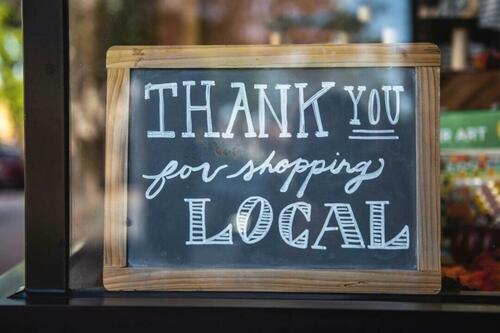Authored by Naveen Athrappully via The Epoch Times (emphasis ours),
The Small Business Administration (SBA) is overhauling a Biden-era lending initiative, citing its “alarmingly high rates” of loan default, the agency said in a May 19 statement.

The Community Advantage Small Business Lending Company program was designed to issue 7(a) loans to “underserved communities,” the SBA said. In the 7(a) loan program, the government offers loan guarantees to lenders, which allows the loan providers to advance credit to small businesses with special needs.
The SBA blamed Community Advantage’s high default rate on lax oversight of the program.
“Community Advantage generated a 7 percent default rate over the last 12 months—more than double that of the overall 7(a) loan portfolio,” it said.
“Additionally, the portfolio is disproportionately stressed, with multiple lenders generating early problem loan rates above 30 percent.”
A problem loan refers to any loan that cannot be recovered from borrowers quickly.
The SBA issued a moratorium prohibiting the expansion of the Community Advantage loan program effective immediately.
In addition, the agency also issued a new standard operating procedure that will mandate lenders taking part in the program to meet “prudent financial stability standards.”
Existing lenders have to “dramatically increase” their capital reserves to continue participating in the program.
SBA administrator Kelly Loeffler called Community Advantage an example of the weaponization of government programs to “tip the scale against deserving small businesses and toward preferred groups and political allies, even when it meant greater risk to American taxpayers.”
Overhauling the Community Advantage program is one of the latest steps the SBA has taken concerning its 7(a) initiative.
On April 22, the agency announced it was eliminating several policies that had resulted in compromise of the financial integrity of the 7(a) program.
The previous administration had eliminated lender fees under 7(a). It also adopted underwriting standards that ended up allowing lenders to approve loans for underqualified borrowers.
“Predictably, the program saw a massive rise in defaults and delinquencies—which the agency was unable to cover due to decreased fee income,” the SBA said.
“By 2024, the 7(a) loan program had a negative cash flow of about $397 million—the first instance of negative cash flow in 13 years.”
The SBA said it was restoring “robust rules” to end such “reckless lending” practices.
Despite changes announced by the SBA, the Small Business Optimism Index fell by 1.6 points in April, the National Federation of Independent Business (NFIB) said in a May 13 statement. This was the second consecutive month the index was below its 51-year average.
According to NFIB chief economist Bill Dunkelberg, “uncertainty continues to be a major impediment for small-business owners in operating their business in April, affecting everything from hiring plans to investment decisions.”
“While owners are still trying to fill a high number of current job openings, their outlook on business conditions is less supportive of future business investments,” he said.
While the SBA tightens policies regarding 7(a) loans, the issuance of these loans has skyrocketed under the Trump administration, the agency said in an April 17 statement.
“Since Jan. 20, 2025, SBA has approved over 1,120 7(a) loans for manufacturers with a total loan volume of $677 million,” the agency said.
“During the same period in 2021, SBA approved less than 650 7(a) loans for manufacturers with a total loan volume of $497 million. Nearly 99 percent of American manufacturers are considered to be small businesses.”
In the first 90 days of the Trump administration, 7(a) loans for manufacturers were up 74 percent from the same period during the Biden administration.
On March 10, the SBA announced a Made in America manufacturing initiative aimed at expanding access to capital for small businesses, cutting down $100 billion in regulations, and creating the necessary infrastructure to support the “blue-collar boom.”
This month, a group of bipartisan lawmakers introduced the Made in America Manufacturing Finance Act, aimed at strengthening small businesses in the country, the office of Sen. Joni Ernst (R-Iowa) said in a May 1 statement.
The bill seeks to raise the loan limit for 7(a) and 504 small-business manufacturing loans from the current $5 million to $10 million.
The act “provides small-business owners the capital they need to expand, modernize, and compete,” said Rep. Roger Williams (R-Texas).
“We must continue to support and empower the job creators who keep our communities thriving. Together, we will continue driving the America First agenda forward and creating an environment where the success of Main Street is a priority.”
Loading...